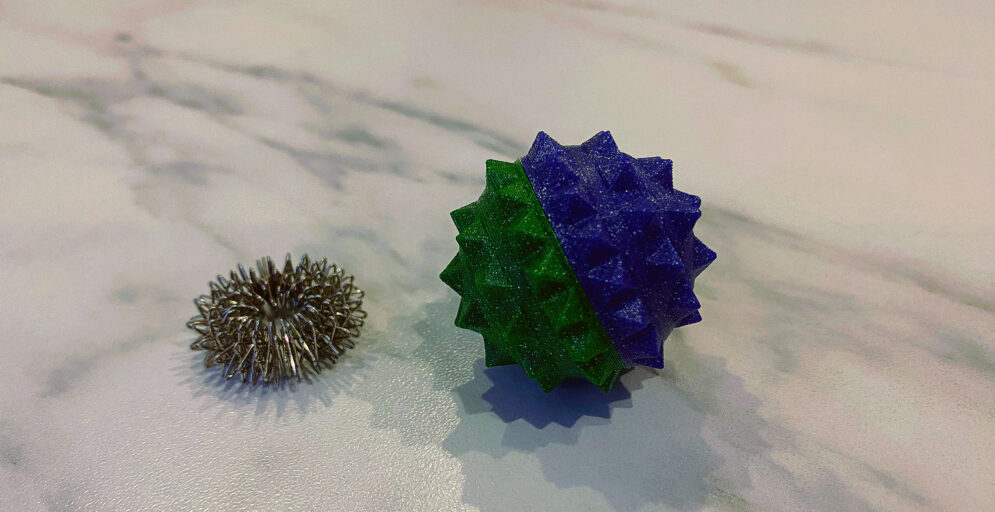Su-Jok is a form of traditional Korean medicine that has been used for centuries to treat various ailments. It is based on the concept of yin and yang, which says that all physical and mental health problems are caused by an imbalance in the flow of energy in the body. Su-Jok focuses on restoring balance through a combination of massage, acupuncture, acupressure points and herbal remedies. The goal is to stimulate specific areas along the meridians in order to restore natural harmony in the body’s systems.
What is Su-Jok
Su-Jok is a holistic healing system discovered by South Korean scientist and professor Park Jae Woo. It combines elements of traditional Chinese medicine, acupuncture, acupressure and massage, providing a comprehensive approach to healthcare. The name Su-Jok comes from the Korean words meaning “hand” and “foot”, which refer to the two main areas treated with this method.
When it is worth using Su-Jok therapy
Su-Jok therapy can be used for a variety of conditions, including:
- pain caused by arthritis or fibromyalgia,
- headache,
- menstrual problems,
- digestive problems such as irritable bowel syndrome (IBS) or acid reflux,
- stress,
- skin diseases such as eczema or psoriasis,
- insomnia,
- constant fatigue,
- depression.
How Su-Jok works
Su-Jok is based on the assumption that all parts of the body are interconnected and can be affected from the level of the hands and feet. The goal of Su-Jok is to restore balance in the body by stimulating specific points on the hands or feet that correspond with other parts of the body. The basic method used by practitioners to stimulate these points involves the use of needles (acupuncture), pressure (acupressure) or massage techniques. It directly affects specific areas of the hand or foot, known as “su”, which means “small universe”. This technique activates the nerve endings of specific areas to restore balance in the body’s energy systems.
In addition, Su-Jok also uses herbs, herbal teas made from medicinal plants. An example is a decoction of ginger root, which is beneficial for relieving many ailments, including digestive problems and cold and flu symptoms (with regular use).
This technique can be used both in the treatment of existing conditions and in prevention through regular treatments aimed at maintaining overall health and well-being.
How to use Su-Jok
The successful use of Su-Jok requires knowledge of how different parts correspond to each other depending on their position on a hand/foot/body map called a “microcosmic orbit”. This helps to understand what attention should be focused on during treatment. Practitioners may use needles, magnets, point therapy, moxibustion (heat), bubbles, etc., depending on the type of condition requiring treatment. For example, if someone suffers from migraine, the practitioner will work in the head area, stimulating specific points with needle insertion / acupuncture / pressure etc. If someone has digestive problems, the practitioner will focus more on the abdominal area, working around the organs associated with the stomach and stimulating these areas accordingly.
Overall, Su-Jok provides a holistic approach to the treatment process, focusing not only on the level of symptoms, but also examining the cause so that the patient gets lasting results and improves his overall well-being. With the right tips, anyone can learn how this method works. Exercises that seem simple but have healing power are important.
Benefits of using Su-Jok
Su-Jok therapy is becoming increasingly popular due to its effectiveness in achieving greater physical harmony without the use of pharmaceuticals or invasive procedures such as surgery. Its non-invasive nature makes it suitable for people of all ages, including children who may not respond well to more traditional forms of treatment.
Chestnut and Su-Jok ring
The most common way of treatment with the Su-Jok method is the use of the so-called chestnut. Chestnut replaces acupuncture needles and is definitely safer, especially for children. It is made of plastic, rubber or hard rubber.
Chestnut should be pressed in the hands or feet. By pressing in this way, there is a relationship with the organs that have nerve endings at a given point. The practitioner moves and rotates the chestnut through hand or foot movements, maintaining pressure, until he feels relieved of pain or tension in the treated areas.
Chestnut can be treated like a toy. It is small, so you can carry it in your pocket and oppress it in almost any situation – in the waiting room, communication, walking…

Another replacement for acupuncture needles is a metal or (less frequently) plastic ring to stimulate specific points on the body. The main advantage of Su-Jok ring therapy is its ability to deeply stimulate points in the fingers without causing discomfort or irritation. Using rings, practitioners are able to access deeper layers under the skin and muscle tissue.
It is very important that the ring is not physically touched by another person, because its energy remains in the metal object. This can interfere with the proper course of healing. It is recommended to move the ring up and down in the area of each finger on both hands for about 20 seconds a day. This is sufficient length for simulation of key organs.